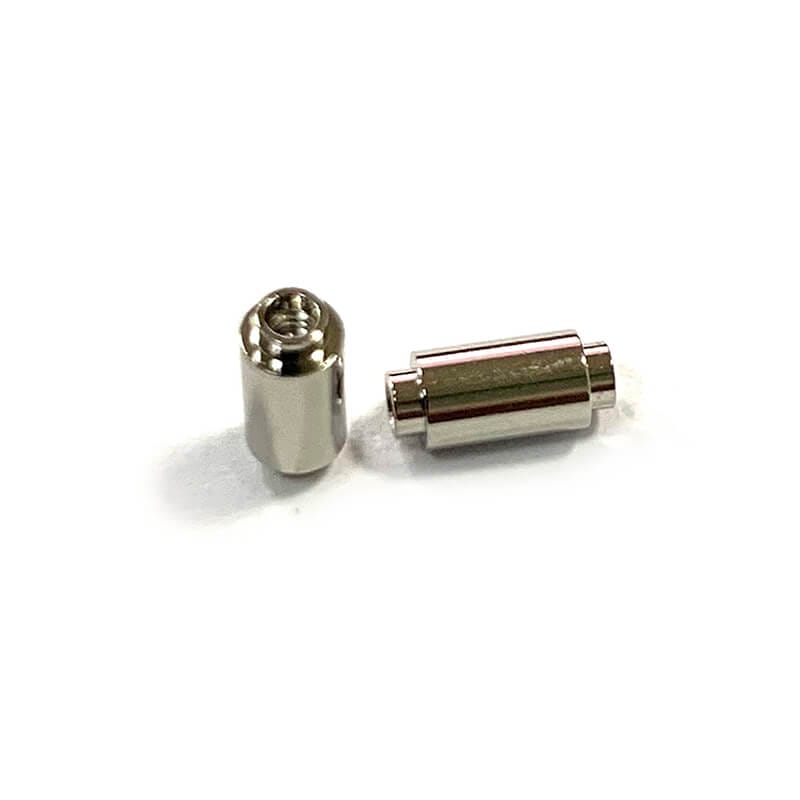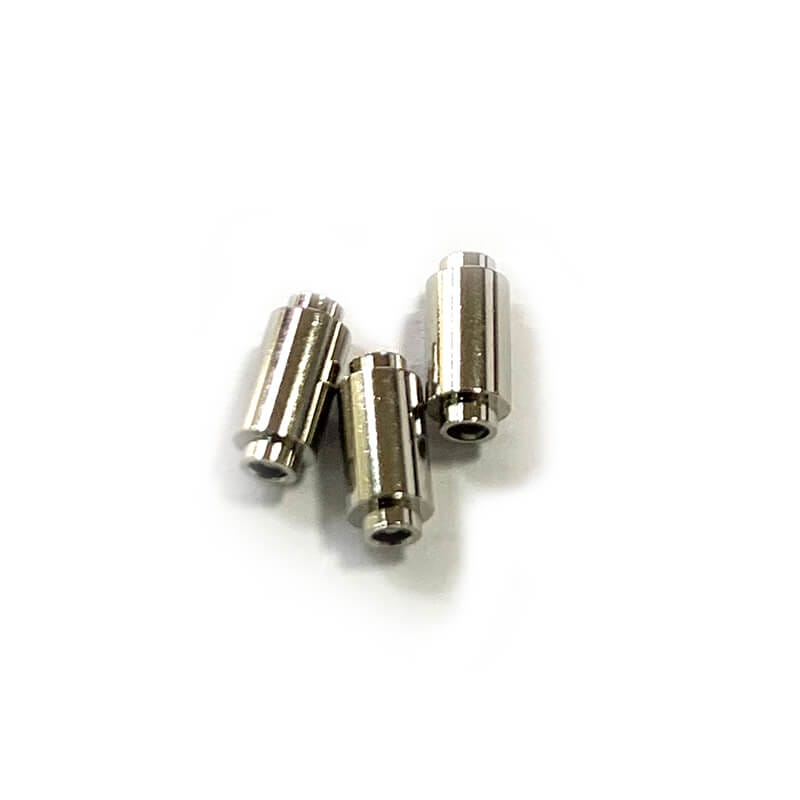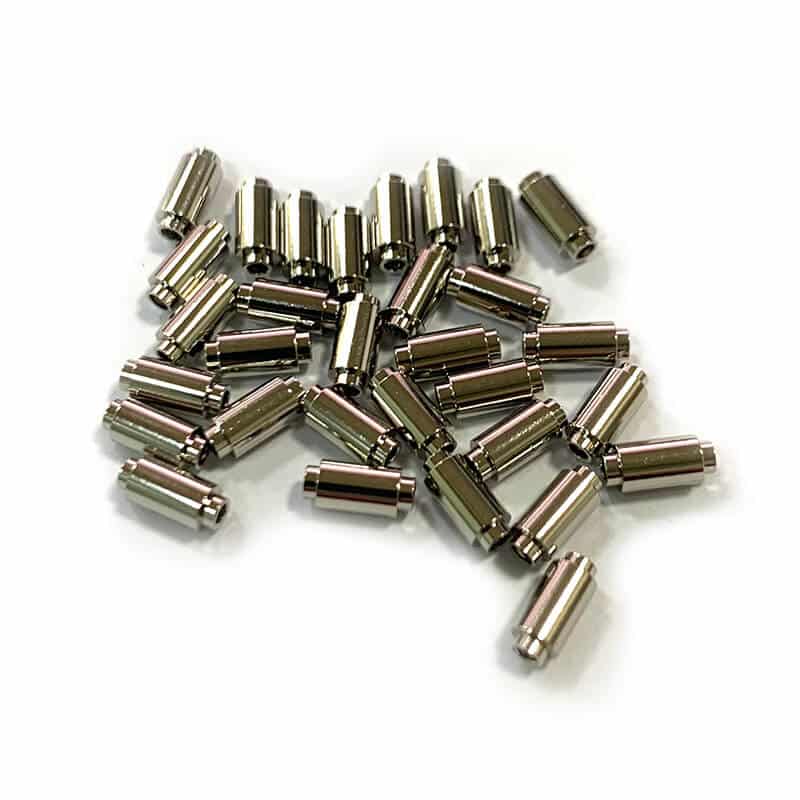Description
Properties of brass CuZn38Pb2: Also called engravers brass, CuZn38Pb2 is a classic leaded machining alloy that is provided in the sheet form.
As a kind of brass with a 2% content of lead which makes it more machinable, CuZn38Pb2 is traditionally used for machine-engraved nameplates and signs.
It features a good combination of strength, corrosive resistance and thermal formability. However, its dual-phase structure means this alloy is not suitable for acid etching.
The 2% content of lead allows this alloy to have excellent machinability. This α-β brass is attractive due to its high strength and corrosion resistance as well as good thermal formability.
However, its dual-phase structure means this alloy is not suitable for acid etching. It features good corrosion resistance and machinability as well as excellent thermal formability and outstanding machining quality.
Features, Properties and Purposes of Nickel Electroplating:
1. The nickel electroplated coating has high stability in the atmosphere. Because of nickel’s powerful passivation, a very thin passivation coating can be rapidly formed on the surface to resist atmosphere, alkali and acid corrosion.
2. The nickel electroplating crystals are extremely tiny and have excellent polishability. The polished nickel electroplated coating presents a mirror-like appearance and maintains its gloss in the atmosphere for a long time. Therefore, electroplated coatings are often used for decoration.
3. Because of its high hardness, the nickel electroplated coating helps products with surface abrasion resistance. In the printing industry, the nickel electroplated coating is often used to improve the hardness of lead surfaces.
Featuring high chemical stability, nickel is usually used for thick electroplated coatings on some chemical devices to prevent corrosion by media.
Electroplated coatings are also widely used in terms of functionality, including repair of worn and corroded parts and local electroplating by brush plating. The electroforming process is used to manufacture electrotypes, record molds and other molds in the printing industry.
A thick nickel electroplated coating has good abrasion resistance and can be used as an abrasion-resistant coating. In recent years, composite electroplating has been developed which can produce a composite nickel electroplated coating with abrasion-proof particles by sedimentation.
The composite nickel electroplated coating has higher hardness and abrasion resistance than the nickel electroplated coating. If graphite or carbon monofluoride is used as dispersed particles, the composite nickel-graphite or carbon monofluoride electroplated coating acquired has good self-lubrication and can be used as a lubrication coating.
The black nickel electroplated coatings also have wide applications as optical instrument coatings or decorative coatings.
4. Nickel electroplating has wide application. It can be used for protective and decorative coatings on steel, iron, pressure casting, aluminum alloy and copper alloy surfaces to protect the base materials against corrosion or for bright decoration. It is also often used as an intermediate coating for other coatings.
Applying a thin chrome coating or an imitation gold coating onto it can achieve better corrosion resistance and more beautiful appearances. In terms of functional application, applying a 1-3 mm thick nickel electroplated coating onto a part in special industries can achieve the repair purpose.
In recent years, nickel electroplating has wider and wider applications in various fields including the manufacturing of continuous casting crystallizers, molds for electronic component surfaces, die-casting molds for alloys, aerospace engine components with complex shapes, and miniature electronic components.
5. In electroplating, because of lots of exceptional properties, nickel electroplating is applied only second to zinc electroplating, with nickel consumption accounting for about 10% of total nickel production output.
Cutting Data of CNC Turning for Brass CuZn38Pb2
- The speed of the CNC lathe spindle is determined by the materials of both the workpiece to be machined and the cutter to be used. Generally, a higher rotation speed leads to a better finish, a higher feed speed leads to a higher machining speed, and a larger engagement leads to a higher machining speed.
- Usually, a high rotation speed is not suitable for a large engagement but a higher feed speed is. A medium or low rotation speed makes the machine tool have a large torque, suitable for a large engagement but not a high feed speed. A high feed speed is suitable for a small engagement. All of these are related to the machine tool, the cutter rigidity and the metal material properties.
- The focus of rough machining is increasing productivity, but economical efficiency and machining cost should be considered. For semi-fine machining and fine machining, cutting efficiency, economical efficiency, and machining cost should be covered on the premise of machining quality guaranteed.
- The feed amount refers to the relative displacement between the workpiece and the tool in the feed direction when the workpiece or tool rotates a round or reciprocates once or the cutter rotates for one tooth.
Material: Aluminum, Stainless Steel, Brass, Copper, Carbon Steel, Titanium alloy, Iron, Carbon Fiber, Plastic, Ceramic, Bamboo, Wood, Acrylic Etc.
Precision: The accuracy requirement is ± 0.002mm, and the Surface Roughness is Ra0.8-3.2 μm.
Processing: CNC lathe, CNC milling and turning, grinding, bending, stamping, casting, etc.
Surface Treatment: Oxidation, hard Anodizing, Zinc-plated, nickel-plated, chrome-plated, silver-plated, gold-plated, etc.
DRW Format: PDF/ DWG/ IGS/ IGES/STEP/STP etc.
Application: Electronics, Communication, Auto parts, furniture, Aerospace, Navigation, Health Care, Infrastructure, etc.
Why Choose Us
[ux_video url=”https://youtu.be/S730qJr9jKA”]
Our Advantages
Excellent Team – One-Stop Service.
Quick Response– Independent research and development of cam design, hardware processing and production, and professional metal coating service.
Quality Assurance -We are an ISO9001:2008 qualified factory, To produce the most precious products for our clients, the machines we use are brands like Damage, Mazak, Toshiba, Citizen, etc.
Advanced Equipment – Yijin has a variety of professional CNC machining lathes and high-end testing equipment.
Our Service – We Promised to provide “101” service and maintain long-term strategic partnerships with customers.
 Call Us Today! (+86) 188-2253-7569
Call Us Today! (+86) 188-2253-7569

